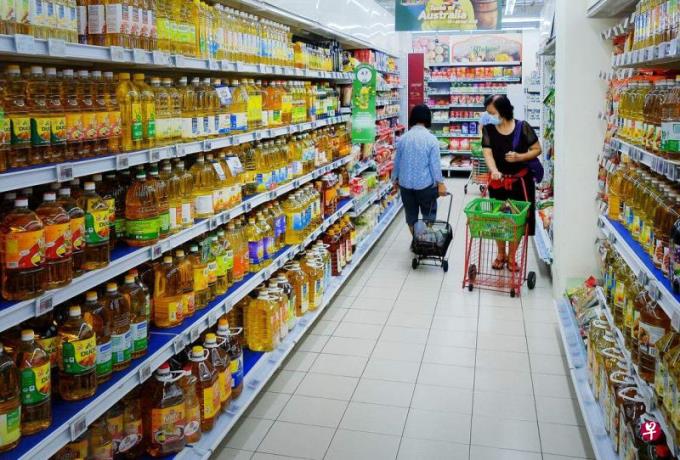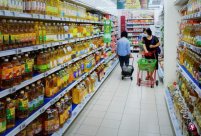
In the past few months, India has announced the rice export ban of all varieties, causing panic in Asia and other countries with rice as the main grain.A immediately reaction is that the price of rice in some countries has risen a lot.According to reports, India's decision to adopt this wave is also based on the continuous rise in domestic rice prices, driving inflation, and at the same time worrying about the drought impact caused by the El Nino phenomenon, which affects domestic food.Do not take a decisive method, calm social grievances as much as possible.
However, as the world's largest exporter, India's move will inevitably affect the sensitive nerves of Asian countries.The imported white rice in India, Bangladesh and Nepal, and some African countries that imported cheap rice from India have suffered deeply.Many market observers are currently paying close attention to the policy trends of Thailand, Vietnam and Pakistan, which account for 30 % of the global rice transactions.
The seven -year -old El Nino phenomenon may crack down on grain harvests in many countries.The disorderly supply of other grain and raw materials caused by the Russian and Ukraine War has also exacerbated the motivation for self -protection for various grain producers and restricting its exports of the country.It is the first thing to ensure the food and clothing of the Chinese people first, and it is also the basic responsibility of a government government. However, in this way, the shortcomings of the international community in terms of grain division of labor are even more disturbing.Once the related issues of rice supply shortage spread, the linkage price of other food will be high, which will adversely affect the stability of international supply in the short term.
In fact, Indian experts visited by the Peninsula TV website recently pointed out that India produces rice far more than domestic needs each year, and the country also has a very safe inventory, but the price is to fall.This phenomenon also exists in the second largest rice.Some international organizations actively call on India to revoke the relevant ban, so as not to expand into the international food crisis, and further crack down on poor countries that rely on imported food.
Nevertheless, based on the close strategic partnership between Singapore and India, India has decided to allow export rice to Singapore.For Singapore, this is the positive embodiment of Singapore's long -term partnership with different countries in the international community.Not only rice, but the Singapore Food Commissioner has opened up food import channels in more than 170 countries and regions around the world for a long time. Therefore, Singapore can avoid excessively relying on a single national market or supply source in certain foods or raw materials, thereby reducing or offsetting may be due to the may be due to it.The unexpected risk brought by the source inflation.
Dami and white rice are staple foods in Singapore. Although India's ban on Singapore's ban has been lifted, the price of production places such as Thailand and Vietnam, the degree of impact on the national impact of the El Nino, and other foods to other foodsThe impact of price, etc. It is still worthy of attention.
Although the overall situation is not optimistic, analysts also believe that local food prices will still be high in the second half of the year, but Chinese people do not need to worry.One of the main reasons is that the new exchange rate is strong, which helps Singapore to offset the high price of imported food and slow down the speed of inflation.In addition, there are diverse types of imported food and food in Singapore. Government and experts have repeatedly reminded people to adopt self -adjustment, change eating habits, or make the types of catering more diverse, avoid continuous purchase of high -priced foods, but more from the market in the market.In a variety of food options, they are flexibly purchased according to their own spending power.
Inflation will ease at a certain stage. The recently released consumer price index (CPI) shows that Singapore's inflation has indeed signs of slowing down, and official inflation is expected to slow down in the next few months.
In the past few years, the government has gained a good response in the people through various means to assist people in responding to living expenses.In addition to the long -term implementation of the residents of residents, hydropower and miscellaneous fees, including cash subsidies, health savings, consumer vouchers and neighborhood shopping vouchers, etc., all substantially alleviated the public's concerns about family expenses.Food prices only occupy a part of the family expenses. Although they are not large, those who buy ingredients or eat in foreign countries have to be exposed to it, so they are more sensitive and easy to affect emotions.
Government departments have paid close attention to the impact of prices on the public for a long time, and the publicity of Chinese people can be seen in a timely manner.At the National Day mass meeting last month, Prime Minister Li Xianlong released a positive signal. The government is studying whether it is as expected by the Chinese people to "generous" next year to give everyone a little more assistance.In fact, this is a positive response to inflation -type, and it is also a testimony to resolve the pressure of people's life.


